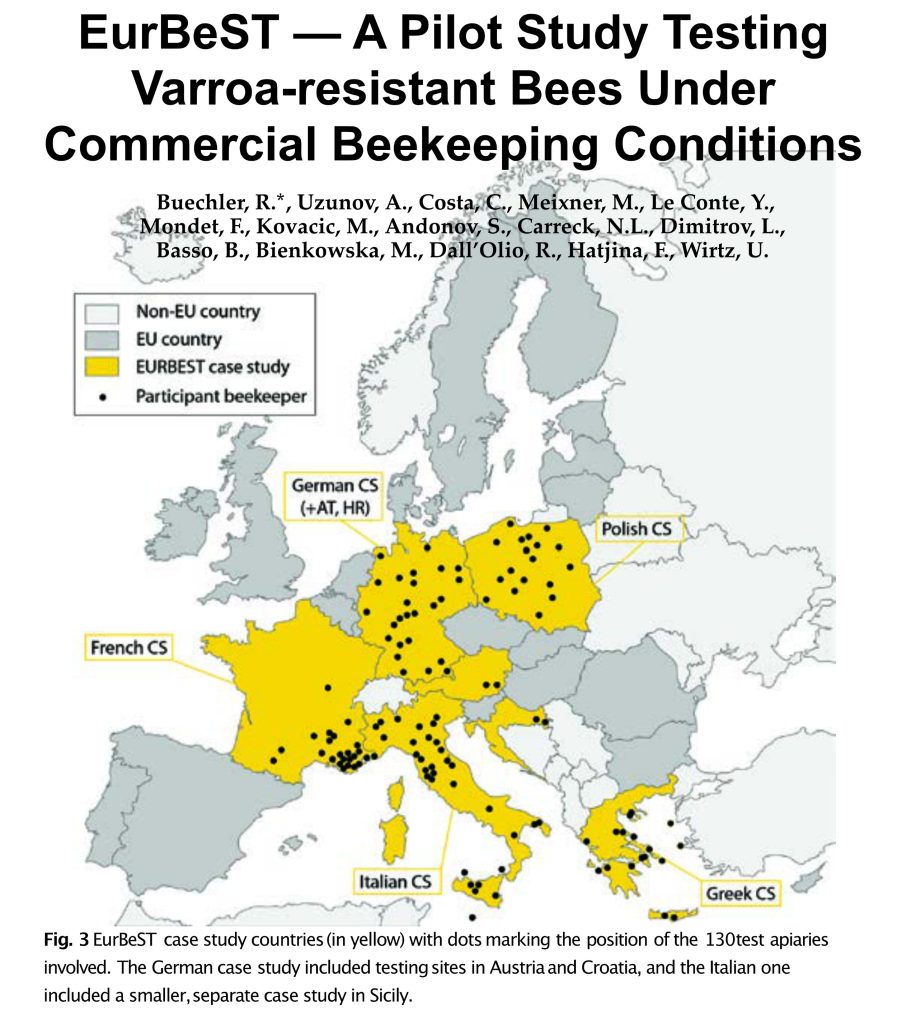Breed varroa-resistant bees!
The study of EurBeST states that varroa-resistant bees are important for beekeeping. In 2017, the European Commission appointed an international group of bee researchers led by the German Bee Institute in Kirchhain to find out more about the importance of varroa-resistant bees for beekeepers in Europe.

The study of EurBeST can be found here: https://www.researchgate.net/publication/357876920_EurBeST_-_A_Pilot_Study_Testing_Varroa-resistant_Bees_Under_Commercial_Beekeeping_Conditions
It is initially stated that beekeepers have limited possibilities to control the mite without risks of enrichment of residues in the bee-products, secondary effects on the bees and resistant varroa mites. The chemical control of varroa mites itself thus has secondary effects in the form of, among other things, lowering the bees’ ability to survive, development and collecting a good harvest. Decreased vitality simply. This is not investigated further in this article. It’s the subject of other investigations and articles. Here the subject is to focus on the benefits of varroa resistance breeding.
I highlight in particular 3 of the conclusions:
–Selective breeding of honey bees is an efficient way to in-crease productivity, to reduce colony losses, and to improve bee health.
–Regional breeding structures are needed to select locally adapted bees.
–Selection for resistance works!
In the caption to one of the figues you can read:
“After a full season without any treatment against varroa, the infestation of several lines clearly remained below the 3% infestation threshold for required mite treatment,” Below the 3% varroa level, the bee colonies were not treated against varroa.
I note that the study confirms the guidelines that we in our local bee club in Hallsberg have worked accordingly. These guidelines give results! We have for several years used the threshold of 3% varroa level for phoretic mites, above which we are recommended to treat. The 3 % varroa level of phoretic mites threshold has helped us achieve a bee breed in our area that only needs less than 10% chemical controlof varroa mites, which we achieve with Thymol pads as treatment. Winter losses are less than or about 10%. Our strain is called Elgon, a combination breed between Buckfast bees and East African Mountain Monticola bees. It produces strong bee colonies with good harvest cababilities and is easily managed.
This study will encourage more beekeepers to put efforts in selecting their bees for varroa resistance.
The guidelines after which we have worked in Hallsberg can be found here:
https://elgon.es/gradualresistance.html
https://elgon.es/varroalevel.html
https://elgon.es/helpingresistance.html
https://www.elgon.es/guidelines.html